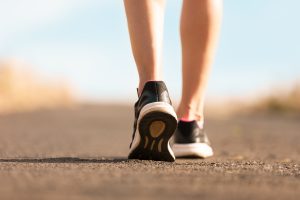Biomechanical Evaluations
Although you might not realize it, feet are extremely complicated and complex pieces of equipment. A total of 52 bones, 66 joints (40 of which are articulated), and hundreds of muscles, tendons, ligaments, nerves, and other structures call your feet and ankles home. All these components must work together harmoniously to get you from point A to point B without any pain or limitation in mobility.
Unfortunately, small misalignments, muscle imbalances, and other issues—whether genetically inherited or acquired over time—can cause you to walk in biomechanically inefficient ways. This can contribute to a wide range of painful conditions and deformities, but experts like the Southern California Foot & Ankle Specialists can help evaluate and fix these underlying abnormalities.
 With every step you take, your feet go through a process called the gait cycle. The heel contacts the ground first, followed by the rest of the foot. Weight is loaded, the arch flattens slightly, and the foot rolls slightly inward. Finally, the heel comes up and you push off with your toes and swing your foot forward. Sounds simple, right?
Unfortunately, your own walking gait may deviate from the ideal in ways both large and small. For example, your feet may roll a little too far inward during the loading phase, which is called overpronation. That simple, small inefficiency can place enormous additional stress on muscles, tendons, ligaments, and joints throughout the entire foot, lower leg, and even the knees.
Bad biomechanics can be a contributing factor in a diverse range of conditions, including:
With every step you take, your feet go through a process called the gait cycle. The heel contacts the ground first, followed by the rest of the foot. Weight is loaded, the arch flattens slightly, and the foot rolls slightly inward. Finally, the heel comes up and you push off with your toes and swing your foot forward. Sounds simple, right?
Unfortunately, your own walking gait may deviate from the ideal in ways both large and small. For example, your feet may roll a little too far inward during the loading phase, which is called overpronation. That simple, small inefficiency can place enormous additional stress on muscles, tendons, ligaments, and joints throughout the entire foot, lower leg, and even the knees.
Bad biomechanics can be a contributing factor in a diverse range of conditions, including:
The Problem with Bad Biomechanics
 With every step you take, your feet go through a process called the gait cycle. The heel contacts the ground first, followed by the rest of the foot. Weight is loaded, the arch flattens slightly, and the foot rolls slightly inward. Finally, the heel comes up and you push off with your toes and swing your foot forward. Sounds simple, right?
Unfortunately, your own walking gait may deviate from the ideal in ways both large and small. For example, your feet may roll a little too far inward during the loading phase, which is called overpronation. That simple, small inefficiency can place enormous additional stress on muscles, tendons, ligaments, and joints throughout the entire foot, lower leg, and even the knees.
Bad biomechanics can be a contributing factor in a diverse range of conditions, including:
With every step you take, your feet go through a process called the gait cycle. The heel contacts the ground first, followed by the rest of the foot. Weight is loaded, the arch flattens slightly, and the foot rolls slightly inward. Finally, the heel comes up and you push off with your toes and swing your foot forward. Sounds simple, right?
Unfortunately, your own walking gait may deviate from the ideal in ways both large and small. For example, your feet may roll a little too far inward during the loading phase, which is called overpronation. That simple, small inefficiency can place enormous additional stress on muscles, tendons, ligaments, and joints throughout the entire foot, lower leg, and even the knees.
Bad biomechanics can be a contributing factor in a diverse range of conditions, including:
- Heel pain
- Ankle sprains
- Sports Injuries (shin splints, stress fractures, Achilles tendinitis, etc.)
- Pinched nerves
- Bunions
Benefits of Biomechanical Evaluation
Because bad biomechanics are a significant contributing factor in many painful conditions, biomechanical evaluation is often an important component of your diagnosis. We will watch you (and even videotape you) as you walk and run, and may measure other components of your gait such as your stride length, leg length differential, etc. Biomechanical evaluation helps us:- Correlate a clinical diagnosis with an underlying cause. Establishing why your feet hurt or why your bunion is getting progressively worse helps us offer the most effective treatment solution for your situation.
- Craft effect custom orthotics. Orthotics aren’t just there to provide cushioning or arch support. Some orthotics made from rigid or semi-rigid materials are actually designed to correct biomechanical abnormalities like overpronation, underpronation, weak ankles, etc. Biomechanical evaluation helps us assess what kind of orthotic device would provide the greatest benefit to you.
- Plan for surgery. When planning a reconstructive surgery or other more aggressive treatment for pain or deformity, a biomechanical evaluation can provide important information about which procedures will be the safest to perform, or will do the most good.
Contact Us
Robert Spencer, DPM
Nitza Rodriguez, DPM
Mario Porciello, DPM
Map & Directions
333 Corporate Drive, Suite 230, Ladera Ranch, CA 92694
Tel: (949) 364-9255 (WALK)
Fax: (949) 364-9250
Office Hours:
Monday - Friday: 9am - 5pm
*(Lunch 12 noon - 1pm)
